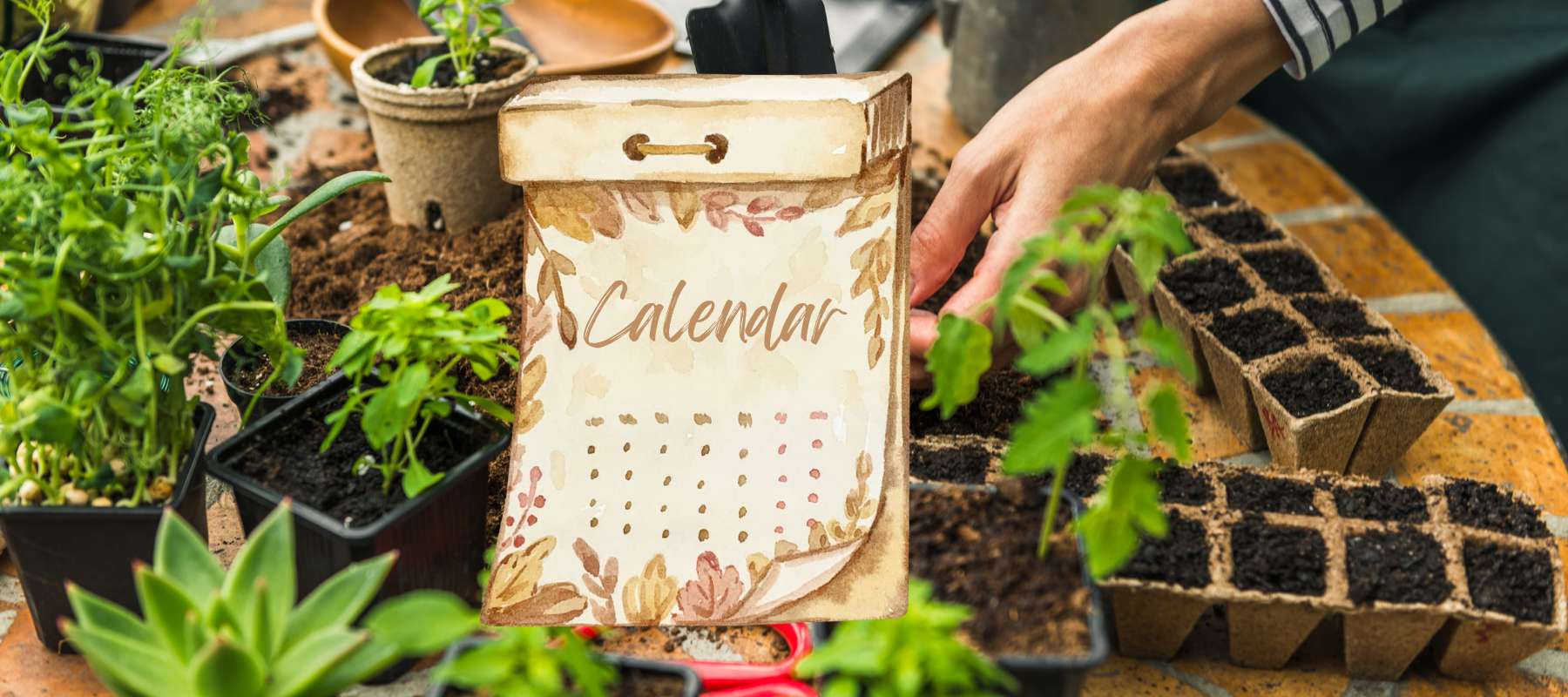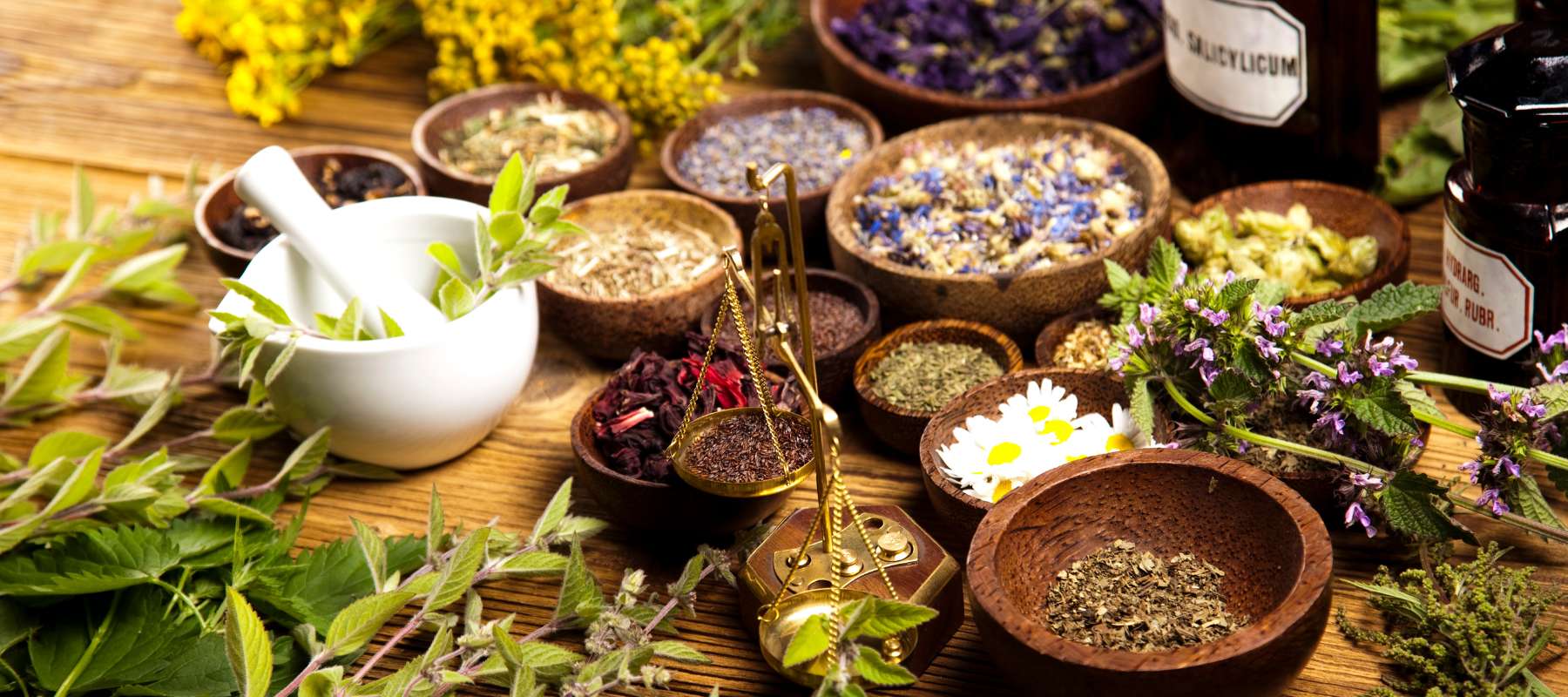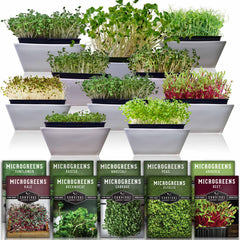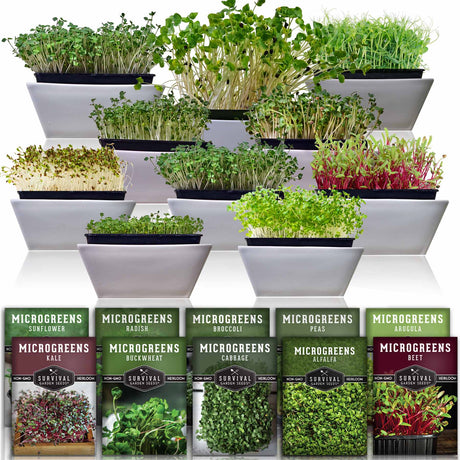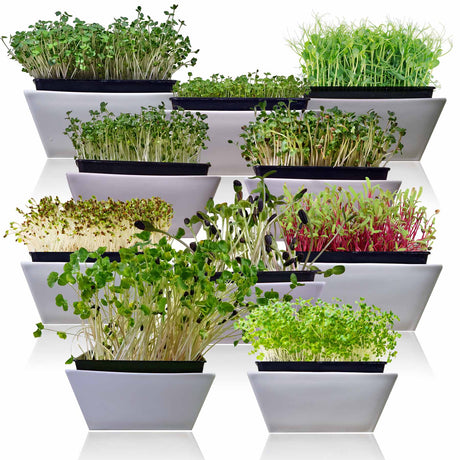Chamomile is one of the most well-known medicinal herbs in the world and has been revered since ancient Egyptian, Greek, and Roman times. However, there are two different plants with this common name: Roman Chamomile and German Chamomile. Because they have many similarities, the word “chamomile” is sometimes used interchangeably for both, which causes confusion for gardeners and aspiring herbalists. Recently, I ran across some “Egyptian” chamomile, a marketing term that refers to the growing region rather than the plant variety. Confused yet? Let’s discuss the differences so you’ll know which chamomile seed to buy and which plant you’re growing, so you can avoid surprises when your herb garden takes off.
Different Plants, But Similar Characteristics
It’s very easy to understand the confusion between Roman Chamomile and German Chamomile. In addition to their similar names, both chamomiles are members of the aster (Asteraceae) family with flowers with a daisy-like bloom with a typical yellow center surrounded by white petals. These plants both have a fruity, apple fragrance and contain the essential oil chamazulene. Both types of chamomiles are soothing, with mild tranquilizing effects, and have natural anti-spasmodic, anti-inflammatory, anti-fungal, and antiseptic properties. They both can be used to make tea or essential oils. Finally, both of these medicinal herbs are excellent companion plants in the garden because they naturally repel garden pests while attracting pollinators with their sweetly scented blooms.
Perennial Roman Chamomile

Roman Chamomile has many common names. If anyone refers to true chamomile, English chamomile, Russian chamomile, or sweet chamomile, they mean Roman Chamomile. When common plant names get confusing, I prefer to check the botanical name to make sure. Roman chamomile is known by two different botanical names: Chamaemelum nobile or occasionally the outdated term, Anthemis nobilis. If there’s a reference to “noble” in the botanical name, you’re dealing with Roman Chamomile.
Roman chamomile is a low-growing, cold hardy perennial herb from western Europe, northern Africa, and the Middle East. It prefers cool, moderate summers and can thrive up to about USDA Zone 9. The plant only grows about 3-6 inches tall and has a sprawling habit, spreading by rhizome. The aromatic foliage gives off a sweet scent when walked on, so it is sometimes used as a substitute for grass lawns or as ground cover in areas that experience light foot traffic. The Roman Chamomile flower is usually more than an inch in diameter atop a feathery stem that can reach about a foot tall.
Annual German Chamomile

German Chamomile also has quite a few aliases: Hungarian chamomile, blue chamomile, and false chamomile. Again, the botanical names can help keep you straight. It is known as Chamomilla recutita or Matricaria chamomilla. Both have “chamomilla” in the name, and neither have any reference to nobility at all.
German chamomile is an annual bushy herb native to Eastern Europe and Western Asia. It’s much taller than its “noble” counterpart, reaching 2 to 3 feet tall, with an upright habit and fine, fern-like foliage. It grows in a wider range of growing zones, up to about USDA Zone 11. Since it’s an annual, it reproduces by heavily self-seeding itself. To produce all of those seeds, the plant has branching stems producing many smaller flowers with white petals that droop down from a central yellow cone. German chamomile flowers are typically one-half to one inch in diameter. All of those blooms mean German chamomile is a good choice if you want to grow your own herbal tea.
Medicinal Uses of Chamomile
Chamomiles have overlapping medicinal uses, with benefits for anxiety, digestion, and inflammation. Both chamomiles can be used for the production of essential oils and chamomile tea, but in general:
Roman Chamomile is more often distilled into chamomile essential oil because of its high concentration of esters. Roman Chamomile has been shown to have antispasmodic effects which may be useful for calming the digestive system. Roman Chamomile is also more likely to be used in cosmetics due to its benefits for skin health and wound healing.
German Chamomile is the most popular choice for brewing, thanks to its prolific blooms. Chamomile tea benefits include improved sleep quality, stress relief, and anxiety support.
Chamomile Tea & Pregnancy
A few words of caution: although chamomile is a widely used, typically safe medicinal herb, a few people should not use it. Pregnant women should avoid chamomile as it may stimulate uterine contractions or cause circulation issues during fetal development. Anyone with ragweed allergies should also skip chamomile tea, as both types of chamomile belong to the same family as ragweed and may cause a similar allergic reaction.
Which Chamomile Should You Grow?
Both types of chamomile are useful additions to the herb garden, and the right choice depends on your growing conditions and needs. If you want a perennial, aromatic herb that is also a lovely, low-growing ground cover, Roman Chamomile is a great choice. If you’d rather grow a bushy, upright plant with an abundance of blooms, try German Chamomile. Or experiment with both to enjoy the diverse benefits of these time-tested, useful herbs in your garden.


